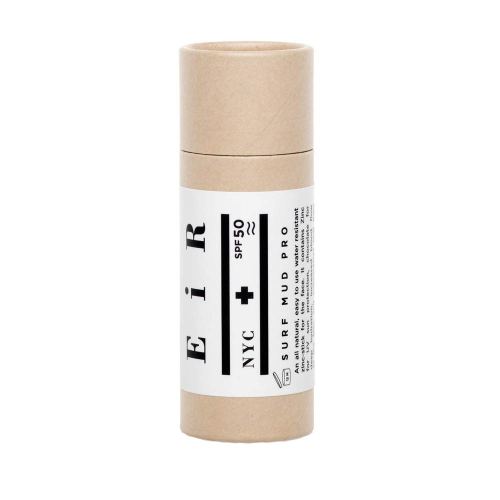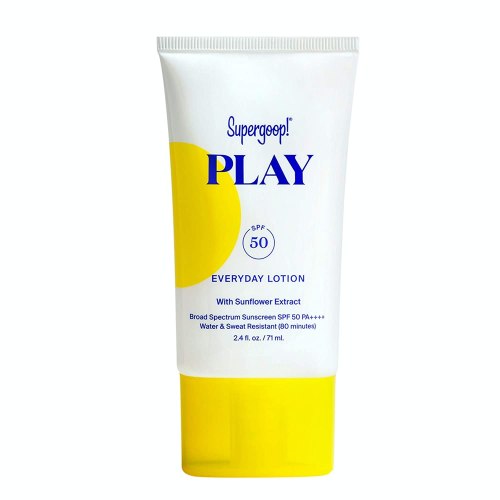Our editors independently select these products. Making a purchase through our links may earn Well+Good a commission
The Biggest Sunscreen Myth You’ve Ever Heard? It’s Pointless To Go Higher Than SPF 30
Derms debunk the myth that sunscreens above 30 SPF are pointless and give their best recommendations for choosing a higher SPF.

As much as we know about the science of sunscreen and how necessary it is for protecting our skin, it’s still shrouded in misconception. One legend is that you don’t need to wear sunscreen on a cloudy day (plot twist: You do.) Another belief is that a solid base tan can suffice in preventing sunburn when in reality, you still need to slather on the SPF. But possibly the biggest sunscreen myth you’ve ever heard? It’s pointless to wear anything above SPF 30.
Experts in This Article
board-certified dermatologist in New York City
board-certified dermatologist at Riverchase Dermatology in Miami Beach, FL
Spoiler alert: This is totally false. SPF 30 has its benefits, but it’s certainly not the end-all-be-all of sun protection. The truth is that the higher your SPF is—and the more correctly you use it—the more protected you’ll be. Ahead, derms debunk such skin-care lore and explain what SPF actually does, how to best use it, and what sunscreens to buy to protect that oh-so-precious skin.
Let’s start here: How does SPF actually work?
Stacy Chimento, MD, a Miami-based board-certified dermatologist at Riverchase Dermatology, explains that SPF, which stands for sun protection factor, isn’t necessarily a metric of strength. Instead, it measures how much time you can spend in the sun without getting burned while wearing sunscreen versus if you weren’t wearing any SPF at all.
“SPF 30 technically allows a person to spend 30 times more time in the sun than if they did not apply sunscreen,” says Dr. Chimento. “However, this requires a person to apply the sunscreen correctly with the proper amount on all areas of the body and re-applications. Higher SPFs, like 50+, block more UV rays from hitting the skin than SPF 30 and provide a substantial amount more protection—especially if a person tends to not apply enough sunscreen.”
Here’s an example: Say, on average, it takes you 10 minutes to burn when exposed to the sun’s rays without any protection whatsoever. If you apply the suggested amount of SPF 30, you’ll have around 300 minutes of protection until you start to burn. Similarly, if you were to wear an SPF 50, it would take around 500 minutes to start feeling crisp. Makes sense?
So, no. It’s not pointless to go above SPF 30. If you use it correctly and re-apply regularly, a sunscreen with SPF 40+ can keep you safer for longer periods of time.
Got it. But how do I know if I’m lathering up the right way?
As Dr. Chimento mentioned, to reap the maximum benefits of an SPF, it has to be applied correctly. This means you’re spreading the suggested amount—about one ounce or enough to fill a shot glass—evenly across your entire body with consistent re-applications about every two hours.
Unfortunately, this is rarely the case. Michele Green, MD, a board-certified dermatologist in New York, explains that natural human error and forgetfulness can do more harm than good—even if we do lather up.
“In reality, most patients don’t apply enough sunblock, [they] stay out in the sun all day, and, even after swimming, skip applications and forget to re-apply sunblock,” says Dr. Green. “This human error creates more sun damage, and you are simply not getting the SPF number that you thought.”
Worried about your sunscreen habits? Don’t be. Just follow these tips from Dr. Chimento and Dr. Green.
1. Go up in SPF: Don’t believe the myth. If you often forget to re-apply sunscreen, using a higher SPF can help. “A higher number sunblock is advantageous to giving you better coverage and protection against wrinkles and sun damage,” says Dr. Green. “It’s also more important to use a higher number SPF when you’re predisposed to skin cancer. Patients with darker skin tones are also in need of higher SPF as they are more apt to develop hyperpigmentation, sunspots, and melasma.”
2. Choose a broad-spectrum sunscreen: Your sunscreen can protect you from two types of UV rays: UVA, which can lead to skin cancer formation, and UVB, which causes sunburn. Not all sunscreens protect from both, though. In fact, most chemical sunscreens only protect from UVB, putting the skin at serious risk and exposing it to some sketchy chemicals. Instead, choose a mineral sunblock that blocks both types of UV. “Mineral sunblock reflects the sun and contains ingredients like titanium dioxide and zinc oxide, which act as a physical block to the skin and are preferable to most chemical sunblocks,” says Dr. Green.
3. Remember to re-apply: Both Dr. Chimento and Dr. Green agree that the very best thing you can do is re-apply regularly. “No sunscreen protects the skin 100 percent from UV rays, and sunscreen also wears off after a few hours,” says Dr. Chimento. “The best way to ensure that you are lessening your chances of a sunburn and possible skin cancer is to cover your entire body with sunscreen and re-apply at least every two hours.”
So that settles that—SPF 30 isn’t the magic number after all. And no matter what number SPF you decide to go with, the key is all about correct, consistent application.
Ready to get over the SPF 30 myth and bulk up with a higher SPF? Below are derm-approved suggestions to bring to the beach this summer.
Protect Your Skin With These Sunscreens High in SPF

Avène Solaire UV Mineral Multi-Defense Sunscreen — $32.00
Remember: It’s important to also pick a sunscreen that blocks out harmful UVA and UVB rays—most mineral sunscreens do just that.
Dr. Green’s go-to is the Avène Solaire UV Mineral Multi-Defense Sunscreen, which offers complete coverage without the sticky, chalky residue some mineral sunscreens leave behind. “It’s specifically formulated for patients with sensitive skin and comes in two types: white and tinted for my patients with type 3 or darker skin types.”

Skinceuticals Physical Fusion UV Defense SPF 50 — $35.00
Dr. Chimento is a big fan of Skinceuticals, which produces several broad-spectrum sunscreens that are also lightweight and paraben-free. She recommends checking out the Physical Fusion UV Defense SPF 50 which “combines 100-percent mineral filters with translucent color spheres for effective broad-spectrum UVA/UVB protection and an even, radiant finish.”

Eir NYC Surf Mud Pro — $30.00
Protect that moneymaker with this easy-to-use zinc-oxide sunscreen stick that’s SPF 50. If you’re keen on a sustainable solution, this is the sunblock for you. Each stick comes in a plastic-free package that’s 100-percent compostable and is made of natural, organic ingredients that are reef-friendly, so no having to worry about residue sweating off after a swim.

EleVen by Venus Williams Unrivaled Sun Serum SPF 35 — $50.00
As Dr. Green mentioned, a higher SPF can help protect Black and brown skin from hyperpigmentation, sunspots, and melasma.
This game-changing serum was designed by the badass Venus Williams herself as a blend of skincare and sun protection for all skin tones. Despite it containing 25-percent zinc oxide, the silky serum blends seamlessly onto skin without leaving any white, chalky residue behind on Black and brown skin. Use it as the very last step in your everyday skin-care routine for some extra TLC from the sun’s rays.

Riverchase Skin Solutions Sheer Physical Spray SPF 50 — $19.00
If you’re a fan of spray sunscreen, Dr. Chimento recommends the Riverchase Skin Solutions Sheer Physical Spray. This purely physical sunscreen sprays evenly, is oil-free, and is water-resistant for up to 40 minutes. Talk about some serious benefits.

Supergoop! Play Everyday Lotion SPF 50 — $32.00
This is a W+G favorite. Supergoop! products work great, and this broad-spectrum sunscreen is no different. It smells delicious and is super lightweight, leaving skin hydrated and dewy. But the best part is, all Supergoop! products are clean, vegan, and reef-friendly, making it another amazing eco-friendly option.
Oh hi! You look like someone who loves free workouts, discounts for cult-fave wellness brands, and exclusive Well+Good content. Sign up for Well+, our online community of wellness insiders, and unlock your rewards instantly.
Sign up for the Well+Good SHOP Newsletter
Get exclusive deals on wellness, beauty, fitness, and food products that have been hand-picked by our editors.
Got it, you've been added to our email list.










